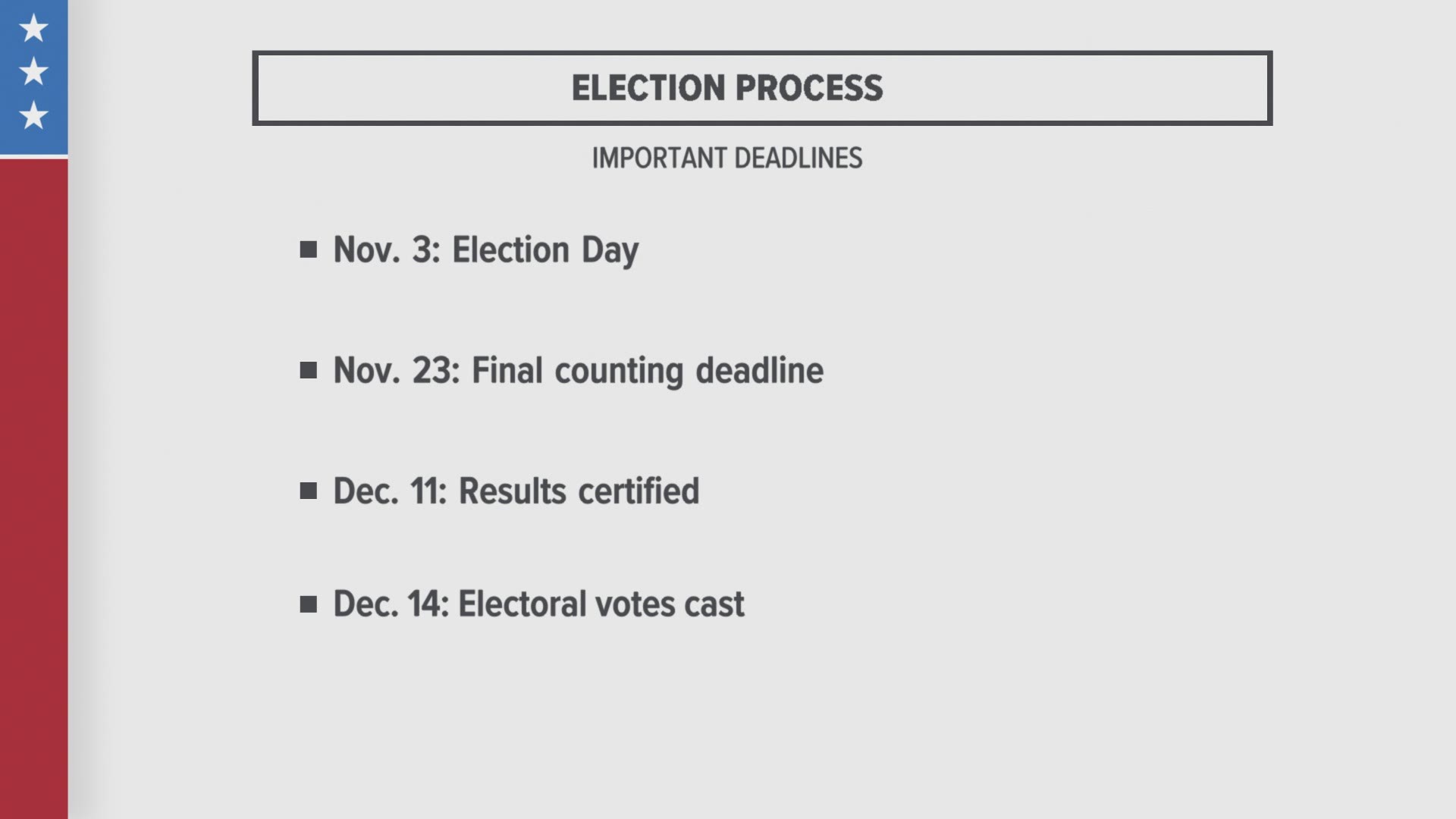COLUMBUS, Ohio — The 2020 presidential race is the third election of the last six that's gone down to the wire.
It's a trend, that actually started with the presidential race of 1800.
Thomas Jefferson and his chosen Vice President pick, Aaron Burr, tied for first place 73-73. For the first of only two times in our history, the election was decided by the House of Representatives.
Twenty-four years later, Andrew Jackson, hero of the War of 1812, won the popular vote by fewer than 39,000 ballots over John Quincy Adams.
In 1860, Abraham Lincoln defeated Stephen Douglass with just 40% of the vote.
By 1912, William Howard Taft and Teddy Roosevelt battled for the Republican nomination, but they split the vote, giving Woodrow Wilson the presidency. Roosevelt did run as a Bull Moose in the general election, which is how he and Taft split the votes.
“When he won in 1908 against Bryan that was a pretty sizeable margin,” William Taft's great-grandson and former Ohio governor Bob Taft said.
10TV asked Bob Taft why we are seeing more contentious presidential outcomes.
“Part of it is the polarization of the country in terms of views and where people live. The urban and rural divides in the country, the divides of the interior part of the country and the coasts. So we are become more divided as a country ideologically geographically in so many different ways,” Taft said.
In modern political history, President John F Kennedy's victory over Richard Nixon in 1960 remains the closest race in presidential history. Neither man claimed a majority of the vote. Kennedy won 49.7 percent, and Nixon had 49.5 percent. Kennedy carried the race with 303 electoral votes.
"After the election, Richard Nixon conceded to Kennedy even though there were some suspicions of vote tampering in states like Texas and Illinois," Taft said. "Nixon was given credit for doing the right thing and making a concession rather than having a prolonged battle over the results."
And who could forget the 2000 presidential race between George W. Bush and Al Gore.
“We are still suffering from the results of the hangover from Bush v. Gore that went all the way up the U.S. Supreme Court. There was a feeling that maybe the court resolved the election and not the people and that reduced the acceptance of the result,” Taft said.
Then in 2016, another contested result. Hillary Clinton loses after winning the popular vote. Donald Trump wins the electoral college putting him in the White House.
Now in 2020, the race entered a new phase. With a sitting president claiming voter fraud before the votes are counted.
“I think that breeds distrust of our elections process needlessly because right now, we're not aware of any significant evidence of fraud,” Taft said.
Taft said a nation already divided over politics needs the victor and the loser to accept the results and move the country forward.
“Whoever is the president is legitimately elected and chosen and its very important for both candidates to act responsibly from that standpoint and accept the results and allow the country to heal and move on,” Taft said.
One of the closest elections that rarely gets mentioned is the cliffhanger in 1880 between Republican James Garfield and Democrat Winfield Hancock.
Although Garfield won 214 electoral votes to Hancock’s 155, Garfield only defeated Hancock in the popular vote by 7,368 votes - one of the smallest margins ever recorded.
The 1960 election is the last time Ohio voted for a candidate who did not win the presidency.

